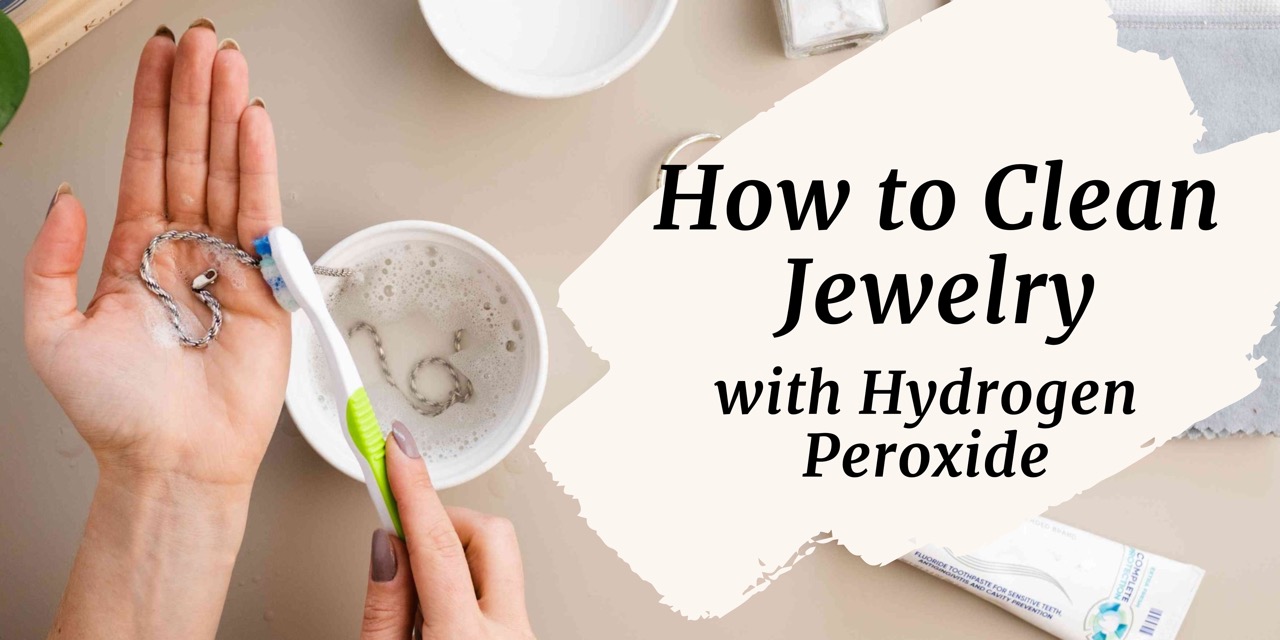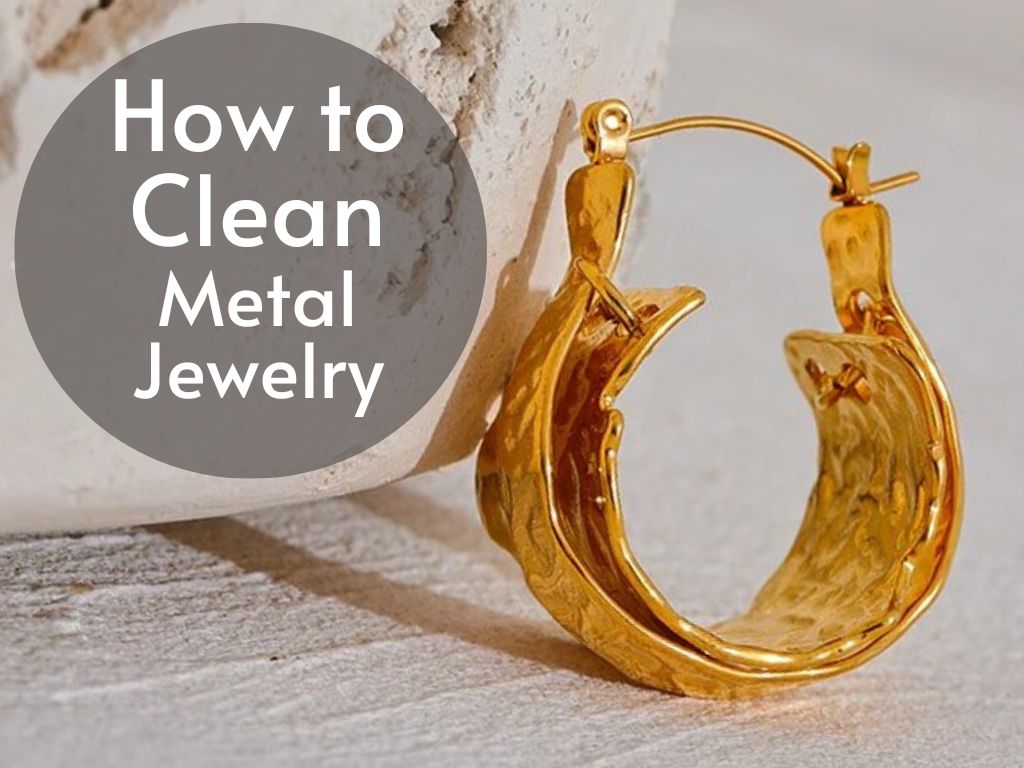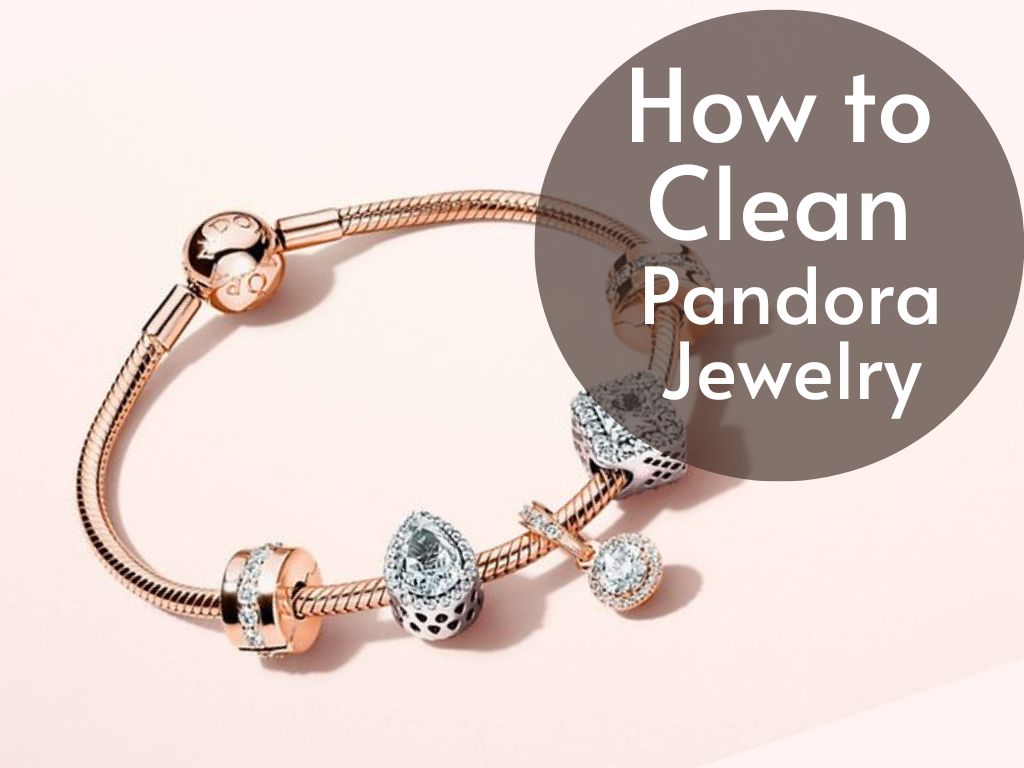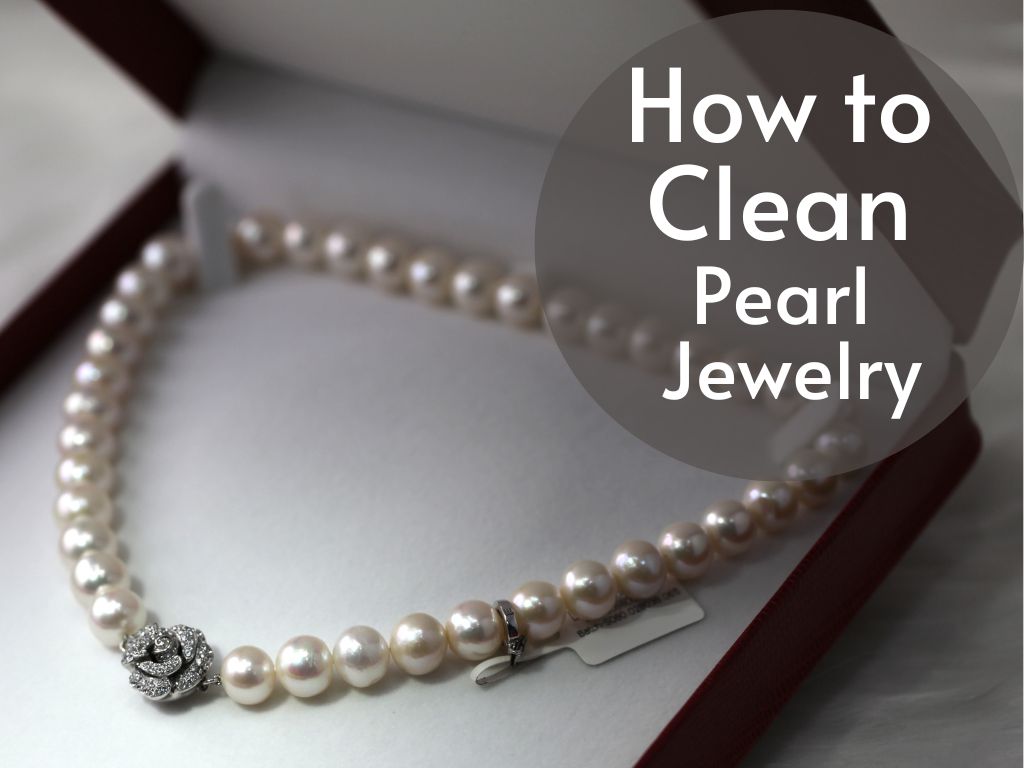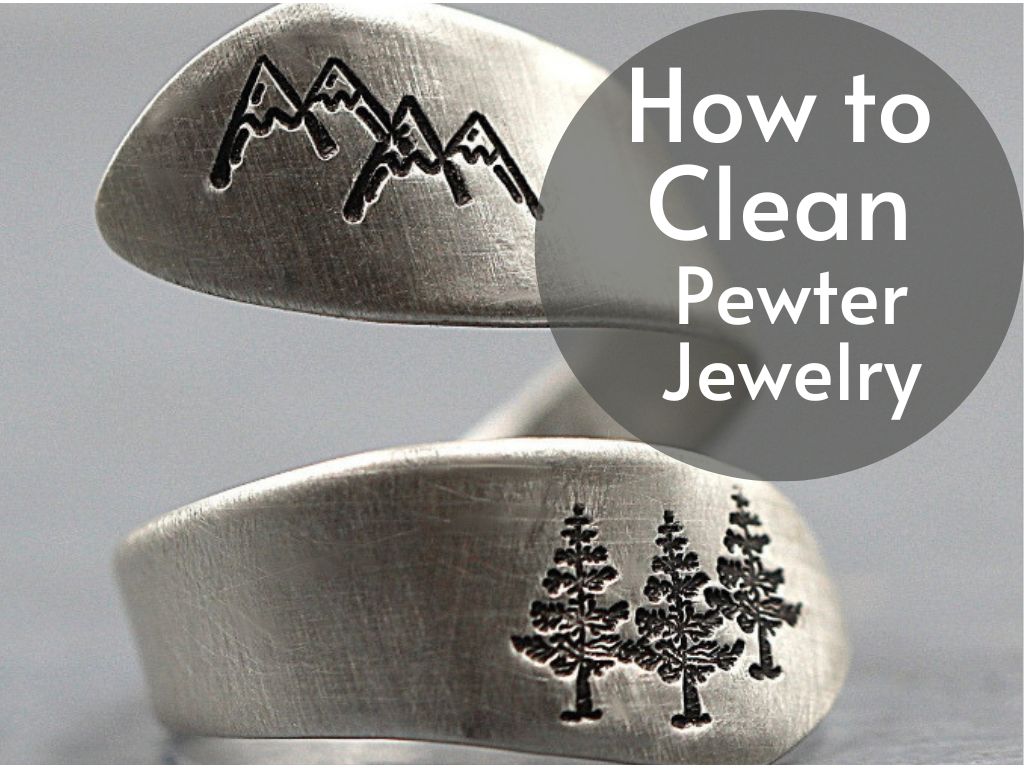In the realm of adornment, jewelry holds a special place in our hearts. Whether it be an heirloom passed down through generations or a beloved piece we received as a gift, jewelry carries sentimental value and serves as an expression of personal style.
However, with time and wear, even the most exquisite pieces can lose their luster. That is why it is essential to keep our jewelry clean and well-maintained.
When it comes to cleaning jewelry, the market offers a plethora of options, from specialized cleaning solutions to professional services. However, one versatile and cost-effective option that often goes unnoticed is hydrogen peroxide.
This commonly found oxidizing agent has long been utilized for its powerful cleaning properties. It can effectively remove dirt, grime, and even tarnish from various types of jewelry without causing damage.
In this comprehensive guide, we will delve into the importance of maintaining clean jewelry and explore hydrogen peroxide as an excellent cleaning agent for various types of adornments. By understanding both the significance of proper care and the potential benefits offered by hydrogen peroxide, you will be equipped with knowledge that enables you to preserve your precious pieces for years to come.
Understanding Hydrogen Peroxide
Chemical composition and properties of hydrogen peroxide
Hydrogen peroxide (H2O2) is a pale blue liquid characterized by its distinctive bubbling and fizzing when it comes into contact with certain substrates. It is composed of two hydrogen atoms bonded to two oxygen atoms, making it a simple but powerful oxidizer. The presence of an additional oxygen atom compared to water (H2O) gives hydrogen peroxide its unique properties.
It is highly reactive and capable of breaking down into water and oxygen, making it an environmentally friendly choice for cleaning. The oxidation properties of hydrogen peroxide make it effective in removing stains, dirt, and grime from jewelry surfaces.
When applied to jewelry, the oxygen released breaks down organic matter, such as oils and dirt particles that accumulate on the surface over time. This makes it particularly useful for cleaning intricate designs or hard-to-reach areas where manual scrubbing may be challenging.
| Jewelry Type | Hydrogen Peroxide Solution | Soaking Time | Additional Instructions |
|---|---|---|---|
| Gold and silver jewelry | 1 part hydrogen peroxide to 2 parts water | 15-30 minutes | Rinse with clean water and dry with a soft cloth. |
| Diamond jewelry | Pure hydrogen peroxide | 10-15 minutes | Rinse with clean water and dry with a soft cloth. |
| Pearl jewelry | Damp cloth with hydrogen peroxide | Wipe gently | Do not soak pearls in hydrogen peroxide. |
| Costume jewelry | 1 part hydrogen peroxide to 2 parts water | 10-15 minutes | Rinse with clean water and dry with a soft cloth. |
Different concentrations available in the market and their uses
Hydrogen peroxide is available in various concentrations that determine its strength or potency. The most commonly found concentrations are 3%, 6%, and 9%.
These percentages indicate the amount of hydrogen peroxide present in a given volume of solution. It’s crucial to be mindful of these concentrations as they can affect both the effectiveness of cleaning and potential risks associated with handling.
The 3% concentration is typically considered safe for household use since it’s milder compared to higher concentrations. It works well for general cleaning purposes on most types of jewelry without causing any damage or discoloration.
The 6% concentration offers slightly more potency which can be useful for removing tougher stains or tarnish from metals like silver or brass. However, caution should be exercised while using this concentration, especially with delicate gemstones or plated jewelry, as prolonged exposure or aggressive cleaning may cause damage.
The 9% concentration is more commonly used in industrial or medical settings and is generally not recommended for jewelry cleaning due to its higher strength. It can potentially cause discoloration, etching, or other adverse effects on delicate materials.
When selecting hydrogen peroxide for jewelry cleaning purposes, it is best to opt for the lowest concentration that will effectively clean the specific type of jewelry you are working with. Always read the labels and follow safety instructions provided by the manufacturer.
Safety Precautions
Importance of wearing protective gloves and goggles while handling hydrogen peroxide
When dealing with any cleaning agent, it is crucial to prioritize your safety. Hydrogen peroxide, although an excellent cleaning agent, can be harmful if mishandled. Therefore, wearing protective gloves and goggles is essential when working with this chemical.
Gloves act as a barrier between your skin and hydrogen peroxide, preventing contact and potential irritation or chemical burns. Goggles are equally important as they shield your eyes from any accidental splashes that may cause harm or discomfort.
Furthermore, it is important to consider the type of gloves suitable for handling hydrogen peroxide. Nitrile gloves are recommended due to their resistance to many chemicals, including hydrogen peroxide.
They provide a reliable barrier and allow for dexterity while ensuring your safety during the cleaning process. Remember that prevention is always better than cure; hence, investing in protective gear is a wise decision.
Proper ventilation to avoid inhaling fumes
In addition to protecting your skin and eyes, adequate ventilation plays a vital role in ensuring your safety when using hydrogen peroxide for jewelry cleaning purposes. Hydrogen peroxide has the potential to release fumes that can be irritating or harmful if inhaled in excessive amounts or without proper air circulation. To create a well-ventilated environment, it is recommended to carry out jewelry cleaning tasks near open windows or in areas with good airflow.
This will help dissipate any fumes that may be generated during the cleaning process. Additionally, using fans or air purifiers can further enhance air circulation within the space.
Remember that even though hydrogen peroxide is relatively safe when used appropriately, prolonged exposure to its fumes can cause respiratory irritation or other health concerns. Prioritizing proper ventilation ensures you maintain a safe environment throughout the jewelry cleaning process.
By adhering to these safety precautions, you can confidently handle hydrogen peroxide while minimizing the risk of any potential harm to yourself. Taking these necessary measures will provide peace of mind and allow you to focus on effectively cleaning and restoring the beauty of your treasured jewelry pieces.
Step 1: Preparing the cleaning solution
Diluting hydrogen peroxide with water is an essential first step in cleaning jewelry effectively and safely. It is crucial to follow the recommended ratio to ensure optimal results without causing any harm to the jewelry. Typically, a ratio of 1 part hydrogen peroxide to 3 parts water works well for most types of jewelry.
This dilution strikes a balance between effective cleaning and minimizing the risk of damage. When choosing a container for soaking the jewelry, it is important to consider its size and material.
The container should be spacious enough to accommodate all pieces comfortably, allowing enough room for them to be fully submerged in the cleaning solution. A glass or ceramic vessel is often a suitable choice as it won’t react with the hydrogen peroxide or scratch delicate surfaces.
Step 2: Soaking the jewelry in the solution
Once you have prepared the cleaning solution, it’s time to immerse your precious jewelry in it. The duration of soaking depends on the material of your items. Non-porous materials like gold or platinum can be soaked for longer periods without any adverse effects.
However, porous materials such as pearls or certain gemstones may require shorter soaking times. To enhance the cleaning action, gently agitate or stir the solution after placing your jewelry inside it.
This helps dislodge dirt particles and facilitates thorough cleansing of hard-to-reach areas. Be careful not to handle fragile pieces too vigorously while stirring so as not to cause any unintended damage.
Step 3: Removing and rinsing the jewelry
After completing the soaking process, it’s time to remove your jewelry from the cleaning solution. Using tweezers or a strainer specifically designed for this purpose will allow you to retrieve each piece effortlessly while minimizing the risk of dropping or losing any items. This step is crucial as it helps prevent accidental exposure to concentrated hydrogen peroxide.
Once removed from the solution, rinse your jewelry thoroughly under running water. The water should be at a moderate temperature to avoid causing any thermal shock or damage.
Ensure that you rinse each piece individually to remove any residue left from the cleaning solution, which may affect its appearance or irritate sensitive skin when worn. By following these general steps with meticulous care, you can effectively clean your jewelry using hydrogen peroxide while ensuring its longevity and preserving its aesthetic appeal.
Cleaning Specific Types of Jewelry with Hydrogen Peroxide
Gold Jewelry
When dealing with gold jewelry, it is important to exercise caution if you have gold-plated or gold-filled pieces. These types of jewelry have a thin layer of gold coating over a base metal.
To prevent damage to the delicate coating, avoid using hydrogen peroxide directly on these pieces. Instead, opt for a milder cleaning method such as wiping them gently with a soft cloth dampened with a mild soap solution.
Remember, the key is to be gentle and avoid any abrasive actions that could potentially remove the gold layer. For intricate designs on gold jewelry that may have accumulated dirt or grime in small crevices, gentle brushing techniques can be employed.
Use a soft-bristled toothbrush moistened with the hydrogen peroxide solution and lightly brush the nooks and crannies of the piece. Be careful not to apply excessive pressure, as this can cause damage or loosen any gemstones embellishing the jewelry.
Silver Jewelry
Silver jewelry tends to tarnish over time due to oxidation. Hydrogen peroxide can effectively remove tarnish from silver pieces when used correctly.
To address tarnish, create a mixture of equal parts hydrogen peroxide and water in a bowl or container suitable for soaking your silver jewelry. Submerge the tarnished silver item in this solution for approximately 15 minutes.
After soaking, remove the jewelry from the hydrogen peroxide solution and rinse it thoroughly under running water to eliminate any remaining residue or chemicals. Dry it gently using a clean and soft cloth before storing it away properly.
It is worth noting that prolonged exposure to hydrogen peroxide can potentially damage silver items by causing discoloration or weakening their structural integrity. Therefore, always adhere to recommended soaking times and promptly rinse off any residual solution after cleaning.
Gemstone Jewelry
When cleaning gemstone jewelry, it is crucial to consider the compatibility of certain gemstones with hydrogen peroxide. While many gemstones can be safely cleaned with hydrogen peroxide solutions, some may be sensitive and prone to damage if exposed to chemical cleaners.
To ensure the safety of your precious gemstone jewelry, research individual stones and their cleaning requirements before using hydrogen peroxide. Alternatively, consult a professional jeweler who can provide specific guidance based on the type of gemstone you possess.
Conclusion
Properly cleaning your jewelry not only restores its sparkle but also helps maintain its longevity. Hydrogen peroxide offers a versatile solution for cleaning various types of jewelry. However, it is important to exercise caution and follow specific guidelines depending on the materials involved.
Remember to take necessary precautions when dealing with gold-plated or gold-filled items, opting for gentler cleaning methods that avoid direct use of hydrogen peroxide. Treat silver jewelry by effectively removing tarnish but being mindful of exposure time.
And finally, when it comes to gemstone jewelry, be aware of individual stone compatibility and seek professional advice if uncertain. By following these guidelines and incorporating proper care into your routine, you can ensure that your cherished jewelry pieces remain beautiful and radiant for years to come.

